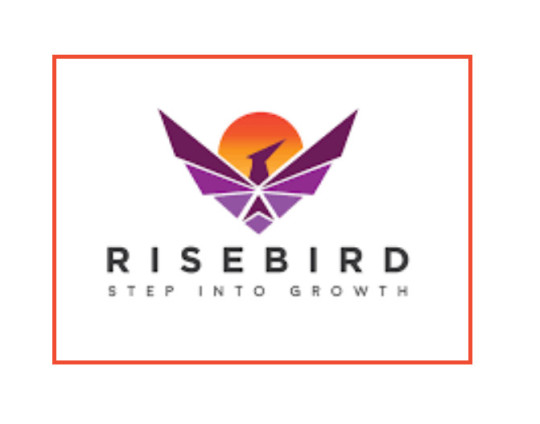#Industrial Control Transformer Market Size
Explore tagged Tumblr posts
Text

Our Blessing ♡ Chapter 02
♡ Pairing: Toji Zenin x reader
♡ Synopsis: in which your ex boyfriend left you with your biggest blessing in life, or- a bundle of a blessing. And he doesn’t even know it.
♡ tags/warnings: 18+, (explicit content in later chapters) angst, and drama, exes to lovers, hidden baby trope, Toji is an asshole (but we love him), Reader just wants to raise Megumi in peace, CEO Toji, possessive Toji, emotionally constipated Toji, Tension, misunderstandings, Flashbacks to past relationship, Heavy themes of abandonment, trust issues, and redemption, baby Megumi is a cutie, Megumi is a mama’s boy, reader works at a flower shop, Hidden Baby Trope
♡ Masterlist ♡ Previous ♡ Next
⋆˚♡˖°⋆˚♡˖°⋆˚♡˖°⋆˚♡˖°⋆˚♡˖°⋆˚♡˖°⋆˚♡˖°⋆˚♡˖°⋆˚♡˖°⋆˚♡˖
The bar reeked of one thing. Not alcohol, not drugs—opulence.
Perched atop one of Japan’s tallest skyscrapers, Horizon was the kind of place where power and money spoke louder than words.
Floor-to-ceiling windows framed the Tokyo skyline, the glittering city stretching endlessly below, lights shimmering like constellations against the inky night. Inside, the atmosphere was a curated blend of wealth and exclusivity—dim mood lighting casting sleek shadows across black marble floors, deep leather seating arranged for whispered conversations, and servers in sharp-cut suits, trained to serve without being seen.
It was the first Saturday of the month. A tradition, unshaken even after college, no matter how busy their lives became.
At a private table, in a section roped off for only the highest clientele, sat a group of men whose names carried weight across the country. Japan’s most powerful, most untouchable, and most eligible bachelors.
Gojo Satoru, heir to a real estate empire of old money and power, his presence as blinding as the white hair atop his head. Geto Suguru, ever calm, ever composed, the sharp mind behind tech industries that would take most men lifetimes to control. Ryomen Sukuna, the wildcard, draped in arrogance, his wealth tied to underground dealings no one dared question.
Born into one of Japan’s most powerful families, Toji wasn’t just wealthy—he was the Zenin heir.
When his father died, leaving behind a fortune vast enough to sustain generations, Toji didn’t just sit back and preserve it.
He tripled it.
Through ruthless business ventures, high-stakes investments, and an instinct sharper than any financial advisor’s best predictions, he transformed the Zenin name into something more than just old money. It was new dominance.
A force that dictated markets, bought influence, and ensured that the name Zenin wasn’t just spoken with respect, but with caution.
The scent of aged whiskey and smoldering cigars curled through the air, mingling with the low hum of conversation. The four of them sat back in their private booth, drinks in hand, Tokyo glittering beneath them like a chessboard waiting to be played.
"Suguru, what's got your ass all twisted up? You've been off lately," Satoru drawled, nudging his best friend with a teasing elbow—an oddly childish gesture in a setting so drenched in wealth.
Sukuna snorted, swirling the amber liquid in his glass before taking a slow sip. "Can’t believe I’m saying this, but the idiot’s right. You’ve been acting weird as fuck lately, man."
Satoru turned to fire back, lips already curling into a smirk, but paused when Suguru let out a deep sigh.
They weren’t wrong. He had been acting off.
And why?
His sharp, cat-like eyes flickered toward one of his oldest friends—Toji of all fucking people—and instantly, like a ghost haunting the back of his mind, he saw it again.
That kid.
The pint-sized version of Toji he had spotted weeks ago, sitting by your side eating pizza.
He was adorable, with big green eyes and dark hair that spiked upwards. He was also hauntingly enough, a replica of his dear friend sat across from him.
It gnawed at him.
How the hell was he supposed to sit here, sipping whiskey and smoking his cigar, pretending everything was normal, when Toji had a whole damn child he didn’t even know about?
With the love of his life, at that.
The secret sat like a stone in his gut, pressing heavier with each second. But still, Suguru brought his cigar to his lips, took a long drag, and exhaled slowly through his nose.
"Don't know what you guys are talking about," he muttered, voice smooth but empty.
Because fuck.
This wasn’t his business to tell.
Suguru forced the thought down, drowning it in another slow drag of his cigar.
Satoru, ever the gossip, rolled his eyes, swirling the amber liquid in his glass as he shifted in his seat. “Boring, Suguru. Well, since he’s not opening up, I might as well. Guys, you won’t believe what happened to me today.”
He leaned in slightly, the dim overhead lighting catching on the rims of his sunglasses as he peered at them all, clearly waiting for someone to bite.
Toji raised a brow, finally breaking his silence. “What, lost a bar of that shitty candy you inhale every day on your lunch break?” He snorted, lips curling.
Satoru waved him off, unfazed—and unwilling to admit that, yes, that had indeed happened earlier.
“Fuck you, Toji. No, I had an old hookup show up at my office today, screaming at my intern like a lunatic, claiming that I—”
Toji cut him off with a sharp grin, already amused. “Don’t tell me you knocked a one-night stand up.”
“I’ll have you know, she wasn’t a one-night stand.” Satoru placed a hand over his chest, feigning deep offense. “We met in Ibiza, and we had a magical week together!"
“That’s just a fucking nightmare,” Sukuna scoffed, tipping his glass back. “You, of all people, with a kid?”
“Oh come on, I’d be great! My kid would be gorgeous,” Satoru declared, ever confident. Suguru feels himself turning green with where this conversation was headed.
“Gorgeous with a mouth full of cavities, I bet,” Toji drawled, taking a slow sip of his drink.
“Nothing a great dentist can’t fix,” Gojo quipped, brushing it off like it was nothing. “Anyways, not the point of the story. She’s getting rid of it tomorrow—I had my lawyer draft up an NDA, so it’ll all be fine.”
Sukuna shook his head, amusement curling at the edges of his smirk. “F’course it’d be you out of all of us to have the first pregnancy scare.”
Satoru furrowed his white brows. “Is that a joke? Toji is sitting right next to you, y’know.”
Suguru could throw up right here, right now, all over this table and it still wouldn't be enough to make him feel any better.
Toji arched a brow, unimpressed. “The hell’s that supposed to mean?” He exhaled through his nose, shaking his head. “I’m not out here sleeping around like you.”
Satoru grinned, raising his hands in mock surrender. “Well, no, but you were in a relationship for what—six years? And Y/N let me in on your little distaste for condoms, you know. I’m shocked nothing came out of that.”
Sukuna let out a low whistle, nudging Toji’s side. “Yeah, got you there, brother.”
Suguru took a slow, deep breath, staring at the swirling whiskey in his glass.
The conversation was pressing in on him, each word adding weight to the already unbearable tension in his chest. He couldn't do this. If he just stood up and walked out, would it be too obvious?
Toji rolled his green eyes, exhaling through his nose. “I didn’t meet Y/N and start fucking her raw after a week in Ibiza, Satoru. I was with her for six years. Sue me.”
Satoru backed off with his hands raised in mock surrender, a grin still tugging at his lips. “Relax, relax. Speaking of Y/N, I could’ve sworn I saw her the other day at that pizza place we used to go to. Did you see her too, Suguru?”
The shift in conversation hit Suguru like a freight train. His entire body tensed, but he forced himself to keep his expression steady.
He hadn't spoken to Satoru about seeing you and the kid, never even mentioned it.
Toji’s brow quirked up, green eyes flicking toward Geto with sudden interest. The curiosity in them was undeniable.
Suguru’s grip on his cigar tightened. Think. Quickly.
“Y/N?” He scoffed, shaking his head as he brought the cigar to his lips, inhaling deeply.
When he exhaled, he kept his voice smooth, controlled. “I remember the woman you’re talking about but it wasn’t her. Just someone who looked like her.”
Satoru hummed, none the wiser. “Yeah, makes sense. That lady had a kid with her, too. Y/N never even had family or friends like that to be babysitting for.”
Suguru’s fingers curled tighter around his glass. He took another slow drag of his cigar, the smoke curling up toward the dim overhead lights, masking the flicker of unease in his gaze.
“Yeah,” he muttered, voice low. “No way it was her.”
He took another sip of whiskey, but the burn in his throat was nothing compared to the storm brewing in his chest as bright green eyes lingered on him.
⋆˚♡˖°⋆˚♡˖°⋆˚♡˖°⋆˚♡˖°⋆˚♡˖°⋆˚♡˖°⋆˚♡˖°⋆˚♡˖°⋆˚♡˖°⋆˚♡˖
Autumn has settled in fully now, painting the world in warm hues of amber, crimson, and gold.
Leaves crunch underfoot as the wind carries them in lazy spirals along the paved sidewalks. The mornings have grown brisk, the kind that nip at your nose and fingertips, making you pull Megumi’s little coat tighter around him before sending him off to school.
His scarf, a deep navy blue, is carefully wrapped around his neck, though he always tugs at it halfway through the day, complaining that it’s too warm.
He’s been thriving at school, and that alone fills you with a relief so deep it’s almost dizzying!
You worried about him, afraid that his quiet and blunt nature might leave him isolated, unsure of how to make friends. But those fears were put to rest the moment he came home and started talking—really talking—about a boy in his class.
A boy named Yuuji.
Apparently, Yuuji was assigned the seat next to him, and from that moment on, there was no escaping the whirlwind of energy that was his new best friend.
Every day, Megumi would come home with some new story, some ridiculous antic Yuuji had pulled.
And even though this boy you hadn’t met yet seemed like the complete opposite of Megumi—rambunctious, loud, endlessly excitable—you couldn’t be more grateful for his presence.
You had even found yourself smiling, shaking your head in amusement, when Megumi’s teacher gently informed you during a parent-teacher meeting that he had been talking a bit too much in class lately.
Talking too much.
You nearly laughed in disbelief. Your Megumi?
You didn’t mind. Not one bit. Because you were just so glad to hear that Megumi wasn't struggling at all in class, instead thriving academically and socially!
Which is why today is so important.
A playdate.
The next step in any childhood friendship, and truthfully, you’re just as excited as Megumi.
He deserves this—deserves to have a friend he can run around with, someone who makes him laugh, someone his own age to share his days with.
Life can feel a little quiet when it’s just the two of you, and though Megumi has never complained, you’re sure he’s been longing for a companion outside of home.
The plan is simple. You coordinated with Yuuji’s father, Jin, since—according to the kindergarten gossip you’ve managed to gather from Megumi—his mom isn’t in the picture.
You don’t pry, but there’s a quiet understanding in the back of your mind.
First, you’ll meet them at the park, where the boys can run wild, burning through their seemingly endless energy.
Then, once they’ve had their fill of play, you’ll all sit down for lunch at a nearby restaurant, letting them refuel before no doubt finding some new way to tire themselves out again.
The walk to the park is peaceful, the late afternoon sun casting golden light over the quiet streets.
The crisp autumn air carries the scent of fallen leaves, dry and earthy, while a gentle breeze rustles through the trees, shaking loose vibrant reds and oranges that drift lazily to the pavement.
Megumi walks beside you, his small hand warm in yours, but his steps begin to slow. You feel the slight tug on your arm before you hear his voice.
"Mama," he mumbles, rubbing his tired eyes with his free hand. "Carry me."
You glance down at him with an amused huff, already anticipating this. "Oh, honey, I don't know if my arms are strong enough anymore."
A darker thought crosses your mind. Toji could probably still carry him like it's nothing, like he's nothing more than a newborn.
You haven't seen the man in years, but if his physique was anything like it was back then—
You push the thought away just as quickly as it comes.
"Please?" Megumi's voice is softer this time, and when you glance down again, he's pouting, shifting on his feet like he already knows you’ll cave.
And how could you say no? Sore arms be damned—this is your baby! One day, far too soon, he’ll stop asking.
You crouch down, letting him wrap his arms around your neck before lifting him with a quiet grunt.
He’s heavier than before, all gangly limbs and growing boy, but he sighs contentedly as he rests his head on your shoulder, his breath warm against your collarbone. You press a soft kiss to his dark hair, letting him nuzzle into your neck.
He won’t fit in your arms like this forever.
The thought lingers, settling into your chest with an ache. Soon, he’ll be too big to carry, too old to want you to. The weight of time feels heavier than the boy in your arms.
Your mind drifts to the slip of paper tucked away in your apartment. Toji’s phone number.
A part of you wonders if you’re wrong for not reaching out now that you can reach him. If you’re selfish for keeping Megumi to yourself. For letting Toji miss this—his son, growing up.
Megumi shifts slightly, pulling you from your thoughts. His small fingers toy with the pendant on your necklace—the little letter ‘M’ you got just for him.
You shake your head, pushing away the what-ifs. Today is about Megumi. About his happiness.
A sudden vibration against your hip snaps you back to the present. You shift Megumi in your arms to free one hand, retrieving your phone from your pocket.
Jin, Yuuji’s father: Hello Y/N! Something came up at work, so I wasn’t able to take Yuuji today, but my younger brother will instead. They’ve already left the house and will be there soon! Sorry for the short notice.
You type out a quick confirmation before tucking your phone away.
Megumi lifts his head slightly. "Are they here yet?"
"Not yet," you say, adjusting your hold on him. "But they should be soon."
His fingers absently trace over the smooth metal of your pendant before he hums in acknowledgment.
By the time you reach the park, the sun has dipped lower, casting long, dappled shadows across the playground. The cool breeze rustles through the empty swings, and the laughter of distant children fills the air.
You find an empty bench and sit, keeping Megumi settled in your lap a little longer, just because you can.
"Megumi!" He lifts his head, suddenly alert, his green eyes scanning the park.
The excited, high-pitched call is accompanied by the sound of small, eager footsteps. You barely get a glimpse before Megumi squirms out of your arms, landing on his feet with practiced ease. He straightens his posture, stuffing his hands into his pockets, trying to play it cool.
You turn toward the voice, and your heart melts at the sight.
Yuuji is absolutely adorable—fluffy pink hair, big brown eyes, a little shorter than Megumi, with the widest grin stretching across his face as he runs over. His joy is infectious, beaming like the sun itself.
But something about him feels… familiar.
Your eyes linger on the soft pink of his hair. It isn’t exactly a common color. And the longer you look at him, the stronger the unsettling familiarity grows.
No. There’s no way.
The thought barely has time to form before a deep, unmistakable voice cuts through your daze.
"Yuuji! Don't go running off without me, you brat."
Your breath catches.
No. Absolutely not.
Your blood runs cold as you turn toward the source, eyes widening, stomach plummeting.
There, towering over the playground with all his tattoos and his unmistakable aura of arrogance, is Ryomen Sukuna of all people.
You feel like the universe is playing some kind of twisted joke on you.
Big. Tall. Tattooed. Another one of Toji’s old friends.
And judging by the way he ruffles Yuuji’s hair—his nephew’s hair—he’s the younger brother Jin mentioned in his text.
Sukuna hasn’t even noticed you yet, too preoccupied with the excitable little boy bouncing in front of him. Yuuji beams up at you. "Wow, Megumi, your mom is really pretty!"
Megumi’s entire body tenses beside you. He steps closer, crossing his arms, his expression darkening.
"I know." he mutters, his glare sharp enough to cut through stone.
You snort, reaching out to rub his back. He huffs but doesn’t pull away, though you can feel the heat radiating off him. His protective streak never fails to amuse you.
The moment cuts through the tension in your chest, but only briefly. Because then you feel it—that unmistakable sensation of being watched.
"Megumi, let’s go play! I’ve been waiting forever! My uncle walks so slow," Yuuji exclaims, practically vibrating with excitement, his bright grin shining under the afternoon sun.
He’s adorable—so full of energy and joy that it makes you want to freeze this moment in time. Your son, on his first real playdate, with a friend who already seems so eager to be by his side.
But you can’t enjoy it. Because standing just a few feet away, arms crossed, towering like a living nightmare, is Ryomen Sukuna.
Of all people.
You blink, trying to process the absurdity of it. How the hell did this happen? What are the odds? What cruel joke is the universe playing on you?
Then, you decide—fuck it.
You’re not going to let Toji who's not even here, his idiot friends, or any other lingering ghosts from your past ruin this for you. This is Megumi’s moment. His first real friend.
You whip out your phone, ignoring Sukuna’s heavy stare as you crouch down slightly. "Alright, boys, stand together and smile!"
Megumi doesn’t really get the smiling part, settling for a neutral stare, while Yuuji doesn’t quite grasp the standing still part, fidgeting excitedly in place. It’s imperfect but perfect all the same, and you snap the pictures, your heart swelling at the sight of them together.
"Alright, go play, but make sure I can see you," you call out.
The second they take off running, your smile drops. You turn to Sukuna, a deep sigh escaping you. He stares right back at you, eyes running up and down your body as if trying to confirm that it is indeed you in front of him.
"Y/N, what the fuck?" Sukuna blurts out, disbelief etched across his face. His eyebrows practically hit his hairline as his sharp gaze flickers between you and Megumi who at this point, was climbing up the stairs to the slide.
Gosh, couldn't even start with a hey, how have you been?
You roll your eyes, already exhausted by this encounter. Seeing Suguru and Satoru was traumatizing enough. This? This is just the cherry on top.
"Ryomen, trust me—I’m feeling the same way. God what are the odds?" You inhale sharply through your nose, leveling Sukuna with a flat stare. His mouth curls into something between a smirk and genuine disbelief, arms folding across his broad chest as he waits for your response.
"Going out on a limb here," Sukuna drawls, tilting his head toward the direction Megumi ran off, "but is the little squirt Toji's?"
Your fingers tighten slightly around your phone. You knew the question was coming—it was inevitable the second he laid eyes on Megumi. The resemblance was too obvious.
Still, hearing it out loud makes something twist deep in your stomach.
"Don't call him that," you say coolly, arching a brow. "And what if he is?"
Sukuna lets out a sharp, amused breath, shaking his head like he can’t quite believe what he’s hearing. "Shit." His gaze flickers to Megumi in the distance, then back to you, something razor-sharp glinting in his expression. "Does Toji even know? There’s no way he does—he never mentioned it. Not once."
Your jaw tightens. You don’t answer right away.
Instead, you focus on Megumi, watching as he follows Yuuji up the jungle gym. His usual serious expression softens—just slightly—when the younger boy tugs at his sleeve, babbling excitedly about something.
Sukuna doesn’t need a verbal response. Your silence tells him everything.
"This is crazy," he breathes, his grin widening, teeth flashing like the devil himself. "You didn’t tell him?"
You exhale through your nose, resisting the urge to rub your temples. "It’s none of your business, Ryomen."
He lets out a low whistle, eyes gleaming with something unreadable. "Damn. That’s cold. And coming from you? Toji would never believe it."
Your scowl deepens. "What the hell is that supposed to mean?"
"Not about the kid," he clarifies, rolling his shoulders. "I mean, shit, we were literally talking about this last night. But you keeping this from him? He always thought you were harmless."
Something flickers across his face—amusement, sure, but also intrigue, like he’s trying to piece together how the hell this slipped past him. Past Toji.
"You gonna tell him?" Sukuna asks after a beat, gaze sharp, assessing.
Your stomach twists. The question has been haunting you ever since Suguru stepped into your shop weeks ago.
For years, you made peace with the fact that Toji would never know. That there was no way to reach him. That no matter how much it hurt, he had to be let go since Megumi always came first.
You had spent years stretching yourself thin—between your job, chasing after Toji, and most importantly, being a new mother. Something had to give. And bitterly enough, that something was Toji.
Now, after all this time, you have his number. Full access to him.
And you haven’t dialed it once, because something else is holding you back now.
Fear.
You glance back at the two boys, now racing toward the swings, their laughter ringing through the crisp evening air.
"Like I said," you mutter, voice quieter now. "None of your business."
Sukuna clicks his tongue, rocking back on his heels. "Alright, alright, I get it." He exhales, like shaking off the conversation. Then, with a pointed smirk, he adds, "But if you think he won’t find out eventually, you’re dumber than I remember."
Your eyes narrow. "You're not gonna tell him?"
He raises a brow, almost offended. "Why would I? It’s not my business to tell."
You scoff. "Oh please. He's your best friend."
Sukuna just grins, slow and knowing. "Yeah? And maybe I’m being a good friend by keeping quiet." He rubs his chin, tilting his head like he’s savoring the moment. "Wouldn’t wanna tell Toji that his favorite girl’s been keeping something like this from him all these years."
Your breath catches.
There’s something about his tone—something not quite mocking. Not quite amused. Something almost... pitying.
It makes your stomach churn.
Before you can press further, Yuuji’s excited voice slices through the tension like a blade.
"Uncle Sukuna! Push me!"
Sukuna’s gaze lingers on you for a beat longer, unreadable, before he turns away. "Saved by the brat," he teases, already striding toward the swings.
You exhale slowly, rubbing a hand over your face.
Of all people, it had to be Sukuna.
And now, whether you like it or not—one more person knows your secret.
⋆˚♡˖°⋆˚♡˖°⋆˚♡˖°⋆˚♡˖°⋆˚♡˖°⋆˚♡˖°⋆˚♡˖°⋆˚♡˖°⋆˚♡˖°⋆˚♡˖
Lunch is… weird.
The kids, thankfully, are oblivious to the tension radiating off you in waves, too engrossed in their own little world to notice. Well, Yuuji chatters—Megumi mostly listens, nodding at appropriate intervals, his expression neutral but not disinterested.
Still, you have a feeling Megumi senses something is off.
He refuses to sit anywhere but next to you, his small frame pressed against your side, his tiny fingers curled into the fabric of your jacket. It’s a quiet, grounding presence, but it does nothing to settle the storm in your chest.
Across the table, Sukuna is insufferably at ease.
He lounges like this is a casual dinner between friends rather than a ticking time bomb waiting to go off. He doesn’t say a word, doesn’t press, but his amusement is palpable.
You can feel it in the lazy way he drums his fingers against the table, the way his lips curl at the edges, the weight of his gaze lingering on you like he’s waiting—just waiting—for you to crack and curse him out.
You refuse to look at him.
Instead, you focus on the kids. Yuuji is deep in a monologue about a video game he’s been begging his dad to buy, talking between massive bites of a burger that looks almost too big for him.
Megumi, as always, listens quietly, picking at his chicken tenders, offering the occasional hum of acknowledgment.
And you? You’re barely holding it together.
Your food sits untouched, stomach twisted too tight to even pretend to eat. You’ve tried to play it cool in front of Sukuna, to act like you’re unaffected by the weight of this secret, but the truth is, you’re terrified.
Toji’s circle has always been small. Satoru, Suguru, Sukuna—his only real friends. The ones who had earned a place in that impenetrable fortress of trust.
And now, two out of three of them know about Megumi.
But Toji doesn’t.
And that thought alone is enough to make you want to curl into yourself and disappear.
You grip your utensils tighter, swallowing around the lump in your throat, barely registering the sound of laughter and clinking dishes around you.
There should be guilt buried somewhere in the mess of emotions clawing at your insides, but all you really feel is sheer, bone-deep anxiety.
Megumi, at least, has finally started actually eating, nibbling on a chicken tender while sipping a kid-sized soda. Yuuji, on the other hand, is still in a battle with his burger—one that’s about the size of his entire face.
Then, in the way only a child can, Yuuji shatters your already fragile nerves with a single, innocent comment.
"You don’t look anything like your mom, Megumi! You must look like your dad. I look just like mine!"
Your stomach plummets.
You freeze, fork clattering against your plate, pulse spiking so hard you swear your vision tunnels for a second. The world tilts, the restaurant noise fading into a muffled blur, your brain scrambling desperately to think of how to steer the conversation anywhere else before—
“Yeah, I guess.”
Megumi says it so nonchalantly, so effortlessly, that for a second, you think you imagined it.
Your head snaps toward him. He’s still calmly eating, tearing off a piece of chicken tender, unbothered, as if Yuuji hadn’t just dropped a grenade in the middle of dinner.
He… doesn’t care?
You feel like you’re about to combust, but Megumi—Megumi, who never talks about his father, who has never once asked, who you’ve spent years bracing yourself for questions from—just shrugs it off like it’s nothing.
You don’t know if you’re relieved or if it somehow makes the situation worse.
And then, because of course, of course, you make the mistake of looking up—
—only to lock eyes with Sukuna, who is watching the entire thing unfold with the most infuriating, knowing grin.
He doesn’t say anything, but the sharp shit eating smile on his stupid face says enough.
You swallow thickly, dragging your gaze away, forcing yourself to take a slow, steady breath. Megumi is fine. He’s not upset. There’s no need to react.
Even though every nerve in your body is screaming otherwise.
⋆˚♡˖°⋆˚♡˖°⋆˚♡˖°⋆˚♡˖°⋆˚♡˖°⋆˚♡˖°⋆˚♡˖°⋆˚♡˖°⋆˚♡˖°⋆˚♡˖
At the gym, the rhythmic clank of metal echoes through the near-empty space, broken only by the occasional grunt of exertion. It’s just past five in the morning—an ungodly hour for most, but perfect for Toji.
No distractions. No waiting around for machines. Just him, the weight of the bar in his hands, and the steady burn in his muscles.
At least, that’s what he wants.
But Sukuna exists.
The sharp clang of the bar hitting the rack cuts through the quiet as Toji exhales, rolling out his shoulders before reaching for his water bottle. That’s when Sukuna, sprawled out on a neighboring machine like he owns the place, decides to run his mouth.
"You ever think about how you have a type?"
Toji pauses mid-sip, eyes narrowing. "Excuse me?"
Sukuna smirks, the kind that makes Toji immediately regret acknowledging him. "That girl you were with last night? She could’ve passed as Y/N’s sister."
The statement is so absurd that Toji almost laughs. Almost. Instead, he lets out a slow breath, shaking his head. "Didn’t do anything with her. Wasn’t with anybody."
"Sure, sure," Sukuna drawls, clearly entertained. "Just crazy how you only let chicks that look like Y/N within a ten-foot radius of you—"
"Sukuna," Toji grits out, reaching for the bar again, "it’s five in the goddamn morning. I’m finishing this rep and then I’m out."
Sukuna snorts but doesn’t push further. He just leans back, crossing his arms over his chest, watching like he knows exactly what he’s done.
Toji ignores him. He doesn’t have a type. That’s bullshit. And it’s not like he’s been chasing after anyone, anyway.
Not since you.
Sure, there were opportunities. A lingering glance, an open invitation, a number slipped into his palm—but none of it ever went anywhere.
He’d tell himself he wasn’t interested, that he didn’t have the patience for it, but deep down, he knew better. Nothing ever felt right. Not after your relationship.
Sukuna’s words settle in his mind, impossible to ignore.
With each rep, his thoughts betray him, dragging up images—snapshots of you. The way your voice used to sharpen when you were annoyed. The way you always had something quick and cutting to say back to him. The way you—
His grip tightens on the bar, jaw clenching.
And then, before he can stop himself, the words slip out—
"Why has everyone been bringing up Y/N lately?"
A pause.
A fraction too long.
Toji doesn’t miss it.
Sukuna covers it up well, tilting his head in mock confusion. "Just a coincidence, man. I dunno."
But Toji knows a bullshit answer when he hears one.
And it’s not just Sukuna.
It’s Suguru, stiff as a board at the bar the other night, suddenly quiet whenever Toji spoke. It’s Satoru, casually dropping that he saw a woman who looked just like you. It’s the little things, insignificant on their own, but when pieced together…
Something doesn’t sit right.
It’s not suspicion. Not yet.
But it lingers, an itch at the back of his mind.
And for the first time in a long time, Toji finds himself thinking about you longer than he should.
⋆˚♡˖°⋆˚♡˖°⋆˚♡˖°⋆˚♡˖°⋆˚♡˖°⋆˚♡˖°⋆˚♡˖°⋆˚♡˖°⋆˚♡˖°⋆˚♡˖
Back at home, you sit in bed with your pajamas on, scrolling through your phone to try and distract yourself.
The soft glow from your bedside lamp casts a warm, golden hue over the cozy room, the faint scent of lavender lingers in the air from the candle you had blown out earlier, and the plush comforter is pulled up over your lap, cocooning you in warmth.
Behind you, a pile of pillows props you up against the headboard, their familiar softness a small comfort against the weight pressing down on your thoughts.
The room is quiet, save for the occasional hum of the air conditioner and the distant sound of cars passing outside.
Megumi is fast asleep after a long day of running around in the sun with his friend. A warm bubble bath and a home-cooked dinner had knocked him right out, and now he’s curled up in his own little bed, lost in whatever dreams a four-year-old has.
You, on the other hand, can’t sleep. Your heart is still racing, unsettled by the events of today.
You can’t stop replaying the moment Yuuji mentioned Toji—how Megumi had barely reacted. No curiosity, no interest, just a shrug, like the thought of his own father meant nothing to him. And that realization sits heavy in your chest.
Guilt.
Guilt gnaws at you—guilt that Megumi doesn’t even wonder about his father. Guilt that Toji hasn’t given him a reason to.
You exhale, your fingers pressing into your temple, trying to massage away the tension that’s been creeping up your neck all night. Just as you’re about to sink back into the quiet, the faint creak of your bedroom door cuts through the silence, making you glance up.
There, in the doorway, stands Megumi.
His small figure framed by the dim light spilling from the hall, his bright green eyes squinting sleepily as he stumbles toward you, his tiny feet padding softly against the floor.
Without a word, he climbs onto the bed, his movements sluggish and heavy with sleep.
His little body wiggles under the sheets until he's nestled beside you, looking almost comically small against the vast, cushioned expanse of your bed, the covers pooling around him like a blanket fort.
“Honey, what’s wrong?” you ask softly, brushing a hand through his tousled hair, your fingers lingering in the mess of it.
“I wanna sleep in your bed, Mama,” he murmurs, his voice barely audible, thick with sleep as he curls himself into the pillow, his small hands gripping it tightly. His face, so peaceful and innocent, presses into the soft fabric, making him look even cuter than he already is.
You can’t help but smile, warmth spreading through your chest as he shuffles even closer. The weight of him, the slow rise and fall of his breaths, lulls you into a sense of peace. Maybe now you can finally relax, let go of the thoughts spinning in your head.
But then, just as you start to relax, his small, unsteady voice breaks the calm.
“I think my dad is stupid.”
Your heart stops for a moment, the words hanging in the air like a sudden chill. Your eyebrows shoot up in surprise, and instinctively, you sit up straighter, facing him fully now.
“Megumi?!” you exclaim softly, your eyes wide. “What did you just say?”
“Whoever my dad is, he’s a dummy,” he mumbles, his voice so matter-of-fact that it almost stings.
A rush of emotions floods you—confusion, concern, and something sharper that you can’t quite place.
“Megumi, what’s this all about?” you ask gently, trying to mask the tightness in your chest. “Don’t say such mean things.”
“A kid from class told me that since I don’t live with my dad, it means that he left us,” Megumi says quietly, curling into the pillow a little more, his tiny body pressed against yours. “So I think he’s a dummy.”
You search for the right words, but they feel impossible to find. What can you say? The kid wasn’t entirely wrong. Toji did leave you at least—he just didn’t realize he was walking away from Megumi as well.
You take a deep breath, ready to say something comforting, to try and ease the hurt in his little heart.
You want to tell him that Toji loved him, that even though things were messy, his father cared. But before you can get the words out, you feel the weight of Megumi's head settle further into your pillow. His small breaths are steady, slow, his tiny body already drifting back to sleep.
He murmurs again, barely audible. "Gnight Mama.”
You glance down at him, his eyelids fluttering as he drifts deeper into slumber, his hand still curled loosely around your wrist. You smile softly, a pang of something tender in your chest. It’s moments like this that remind you of how much he needed the quiet, the calm.
You don’t push him. You just let him be, letting the words hang in the space between you two, unsaid.
With a sigh, you reach over and switch off the bedside lamp, the room plunging into the soft embrace of darkness.
The only sound is the soft rustling of sheets as Megumi shuffles closer to you, his small body curling into yours with the kind of comfort only a child can seek. His little face nuzzles against your neck, his breath warm against your skin.
For a moment, you think you might finally find the sleep you’ve been chasing all night. But the stillness in the room only heightens the weight in your chest, the tightness of unanswered questions.
Your thoughts keep drifting to Toji—the way his absence hung between you, even now, even here.
You can’t help but wonder if he ever thought about your failed relationship, if he ever truly understood what he’d left behind. Maybe not just you, but him—Megumi, the child who would never ask for a father but still had a place for one.
You try to push it out of your mind, focusing on the warm weight of Megumi against you, but it lingers.
You close your eyes, but sleep remains just out of reach.
#toji fushiguro#toji x reader#toji x you#toji fushigro x reader#jujustu kaisen#jujustsu kaisen x reader#jjk fic#toji zenin#reader insert#toji x self insert#toji fanfic#toji x female reader#toji fluff#fluff#angst#jujutsu kaisen fanfic#hidden baby trope#our blessing#jjk toji#zenin toji x reader
95 notes
·
View notes
Text
Industrial control transformer demand is rising due to the fast growth of power generation sectors, the world's growing power demand, and the need to prevent equipment failures caused by voltage fluctuations. These factors are driving the growth of the industrial control transformer market.
#Industrial Control Transformer Market share#Industrial Control Transformer Market growth#Industrial Control Transformer Market size#Industrial Control Transformer Market trends#Industrial Control Transformer Market analysis#Industrial Control Transformer Market demand
0 notes
Text
Advancing Reliability: Industrial Control Transformer Market Trends

Increasing industrialization and automation and rising demand for power efficiency and reliability are likely to drive the market in the forecast period.
According to TechSci Research report, “Industrial Control Transformer Market – Global Industry Size, Share, Trends, Competition Forecast & Opportunities, 2028”, the Global Industrial Control Transformer Market stood at USD 712.10 million in 2022 and is anticipated to grow with a CAGR of 4.50% in the forecast period.
The accelerated pace of industrial automation represents a significant driver for the global Industrial Control Transformer market. Industries across the board are increasingly adopting automation technologies to enhance efficiency, productivity, and precision in their operations. This widespread adoption necessitates the use of advanced control systems and equipment, which, in turn, rely on Industrial Control Transformers for reliable power distribution and voltage regulation. These transformers are essential in ensuring the stable and consistent delivery of electricity to sensitive control panels, motors, sensors, and other automated components.
They safeguard these critical assets from voltage fluctuations and electrical disturbances, thereby minimizing the risk of costly downtime and equipment damage. As industries continue to embrace automation to remain competitive, the demand for Industrial Control Transformers is poised to rise. This trend extends across various sectors, including manufacturing, energy, and transportation, and underscores the market's growth potential as it adapts to the evolving needs of modern industrial environments.
The increasing global shift toward renewable energy sources, such as wind, solar, and hydroelectric power, is a pivotal driver for the Industrial Control Transformer market. Renewable energy installations often require specialized control systems to manage power generation, transmission, and distribution efficiently. Industrial Control Transformers play a critical role in this process, ensuring voltage stability and the safe integration of renewable energy into existing grids.
As governments and organizations worldwide prioritize reducing carbon emissions and enhancing sustainability, the demand for renewable energy solutions has surged. This, in turn, has led to a heightened requirement for Industrial Control Transformers that can effectively handle the variable and sometimes intermittent output of renewable energy sources, contributing to grid stability and reliability.The continued expansion of renewable energy capacity, driven by supportive policies and environmental goals, underscores the essential role of Industrial Control Transformers in facilitating this transition. This driver reflects a promising market opportunity as the world increasingly embraces cleaner and more sustainable energy alternatives.
Browse over XX market data Figures spread through XX Pages and an in-depth TOC on "Global Industrial Control Transformer Market.” https://www.techsciresearch.com/report/industrial-control-transformer-market/16135.html
The Global Industrial Control Transformer Market is segmented into phase, power rating, end user and region.
Based on phase, The three segment had the largest market share in 2022 & expected to maintain in the forecast period. Firstly, three-phase transformers are known for their efficiency and ability to handle high power loads effectively. They provide a continuous and balanced power supply, which is crucial in industrial settings where equipment and machinery often require a consistent and reliable source of electricity. This efficiency leads to reduced energy wastage and lower operational costs, making three-phase transformers an attractive choice for industrial applications. Secondly, many industrial processes and equipment are designed to operate on three-phase power systems.
Using three-phase transformers ensures seamless compatibility with these systems, simplifying the installation and integration process. It also allows for greater flexibility in connecting multiple machines and devices within an industrial facility. Additionally, three-phase transformers are known for their robustness and durability, making them suitable for the demanding conditions often encountered in industrial environments. They are designed to withstand heavy loads, voltage fluctuations, and temperature variations, ensuring long-term reliability and reduced maintenance requirements.
Based in the region Asia Pacific is the largest market for industrial control transformers and is projected to continue to dominate the market during the forecast period. this is due to the following factors such as increasing industrialization and automation, growing demand for power efficiency and reliability, stringent emission regulations, expansion of the manufacturing industry, growing demand for renewable energy among others.
Major companies operating in the Global Industrial Control Transformer Market are:
ABB Ltd
Schneider Electric SE
Eaton Corporation plc
Emerson Electric Co.
Hammond Power Solutions Inc.
Siemens Energy & Automation, Inc
General Electric Company
Toshiba Corporation
Fuji Electric Co., Ltd
WEG S.A
Download Free Sample Report https://www.techsciresearch.com/sample-report.aspx?cid=16135
Customers can also request for 10% free customization on this report.
“The Global Industrial Control Transformer market is expected to rise in the upcoming years and register a significant CAGR during the forecast period. The global Industrial Control Transformer market is propelled by the rising trend of industrial automation. As industries strive for enhanced efficiency and precision in their operations, the demand for advanced control systems and equipment grows. Industrial Control Transformers play a crucial role in these systems, ensuring reliable power distribution and voltage regulation. This driver underscores the market's expansion as automation continues to shape modern industrial landscapes.
Additionally, By region, Asia Pacific is the largest market for industrial control transformers and is projected to continue to dominate the market during the forecast period. This is due to the increasing industrialization and automation in the region. China, India, and Japan are the major markets in the region. Therefore, the market of Industrial Control Transformer is expected to boost in the upcoming years.,” said Mr. Karan Chechi, Research Director with TechSci Research, a research-based management consulting firm.
“Industrial Control Transformer Market By Phase (Single, Three), By Power Rating (25-500 VA, 500-1000 VA, 1000-1500 VA, >1500 VA), By End-User (Power Generation, Oil & Gas, Chemical, Metal & Mining, Others), By Region, By Competition Forecast & Opportunities, 2018-2028F”, has evaluated the future growth potential of Global Industrial Control Transformer Market and provides statistics & information on market size, structure and future market growth. The report intends to provide cutting-edge market intelligence and help decision-makers make sound investment decisions., The report also identifies and analyzes the emerging trends along with essential drivers, challenges, and opportunities in the Global Industrial Control Transformer Market.
Browse Research Reports
Renewable Battery Storage Market https://www.techsciresearch.com/report/renewable-battery-storage-market/19392.html Micro Inverter Market https://www.techsciresearch.com/report/micro-inverter-market/23189.html Substation Grounding System Market https://www.techsciresearch.com/report/substation-grounding-system-market/23194.html
Contact Mr. Ken Mathews 708 Third Avenue, Manhattan, NY, New York – 10017 Tel: +1-646-360-1656 Email:[email protected] Website: https://www.techsciresearch.com
#Industrial Control Transformer Market#Industrial Control Transformer Market Size#Industrial Control Transformer Market Share#Industrial Control Transformer Market Trends#Industrial Control Transformer Market Growth
0 notes
Text
In the 1990s, John Williamson, a British economist and senior fellow of the Peterson Institute for International Economics, coined the term Washington Consensus to describe the neoliberal agenda to privatise state-owned enterprises (SOEs), commodify public goods, and liberalise capital accounts and trade. These policy choices, driven by the IMF and World Bank in alignment with the US Treasury, find much of their theoretical justification in neoclassical economics and the works of thinkers like Friedrich Hayek and those associated with the neoliberal Mont Pelerin Society. The Washington Consensus paradigm is perhaps most famous for its role in the so-called structural adjustment programmes (SAPs), which led to a lost decade on the African continent.
For the past several decades, the IMF has enforced a combination of austerity (what they call a ‘balanced budget’ agenda), privatisation, and trade liberalisation on decolonising nations. This has stripped states in the Global South of the capacity to drive their development processes and protect their infant industries. In order to deal with the resulting imbalances, the IMF has frequently encouraged underdeveloped countries to borrow from private capital markets, leading to more debt traps. Meanwhile, the World Bank has historically followed an agenda of recommending anything but large-scale industrialisation for the Global South. In the early post-World War II era, this manifested in its recommendations for countries to stick to their ‘comparative advantage’ in exporting raw materials. By the 1990s, the World Bank was promoting ‘financial deepening’, code for encouraging financial deregulation as a panacea for mobilising resources for development. More recently, the World Bank has shifted its focus to promote development in the service sector and investment in small and medium-sized enterprises (SMEs), both recipes for continued debt bondage on the national and household level. The service sector is often dominated by multinational corporations (MNCs) with monopolistic structures, making states that focus their development on this sector susceptible to the whims of MNCs in the Global North. SMEs, which typically lack the resources (including government subsidies) to compete with MNCs and do not have the advantages of scale of MNCs, end up absorbed into these larger monopoly-dominated networks. Indeed, the combination of financial liberalisation and the promotion of SMEs locks countries into what Samir Amin called generalised monopoly capital, with both upstream (raw materials, technology, and capital) and downstream (distribution, marketing, and consumer access) networks of control.
One of the main outcomes of the Washington Consensus has been an almost religious belief in the power of foreign direct investment (FDI) to drive economic growth and structural transformation. The FDI mindset drives Global South states towards a narrow focus on opening up their labour and natural resource markets to Western monopolies, thereby linking their agendas to the rent-seeking needs of financiers rather than the developmental aspirations of their populations. Empirical evidence of FDI’s transformative capacity, however, is limited at best: this form of investment fails to promote integrative growth that could pave a pathway out of indebtedness and towards national sovereignty, instead promoting unproductive sectors of the economy. Three characteristics of FDI are important to note:
FDI flows are declining. FDI peaked in 2007, the year that the Third Great Depression took hold in the major capitalist countries, and has decreased in the years since. Indeed, according to the United Nations’ Conference on Trade and Development (UNCTAD), both FDI and project finance (long-term infrastructure or industrial funding) have experienced a gradual decline. From 2022 to 2023, for instance, developing countries saw a 7% decrease in FDI flows to developing countries.
FDI flows are non-productive. Over the past few years, UNCTAD’s annual investment reports have shown the changing character of FDI. While in the past it was concentrated in the manufacturing and industrial sectors as well as natural resource extraction, FDI has increasingly been channelled into the financial and service sectors, where it does not generate integrated or transformative development that could help transcend colonial underdevelopment.
FDI flows do not drive growth or investment. According to a 1999 UNCTAD report, large FDI inflows to developing countries in the 1990s had little impact on increasing investment patterns. More recent studies by UNCTAD have shown a clear divergence between FDI flows and GDP growth since the Third Great Depression. This means that economic growth is increasingly independent of FDI flows.
The Washington Consensus has only reinforced the colonial pattern of underdevelopment, producing debt burdens that cannot be easily serviced. With bondholders mercilessly seeking repayment and interest regardless of a country’s economic situation, the debt spiral eats into precious revenues that could otherwise be spent on health care, education, and productive industry and infrastructure. Countries borrow and go into debt. When they cannot repay their debt, they borrow more to pay off their existing debt, and the spiral continues. As Raghuram Rajan, the IMF’s chief economist from 2003 to 2007, wrote in his book Fault Lines (2010), the IMF’s policies are a ‘new form of financial colonialism’.
40 notes
·
View notes
Text
Michael Stratford at Politico:
Elon Musk said Wednesday that the Consumer Financial Protection Bureau should be abolished, calling for the elimination of an agency that would potentially regulate the future payments business of the Musk-owned X platform. “Delete CFPB,” Musk, who is leading an effort on behalf of President-elect Donald Trump to shrink the size of the federal government, wrote in a post on X. “There are too many duplicative regulatory agencies.” Trump on the campaign trail called for easing regulation of the financial industry generally but didn’t explicitly call for the elimination of the CFPB, which Republicans have railed against for years. The Heritage Foundation’s Project 2025 blueprint, which Trump sought to distance himself from during the campaign, recommended the agency be shut down.
Trump is widely expected to rein in the Biden-era CFPB’s regulatory agenda and ease enforcement against companies, as he did during his first term in office. But eliminating the agency entirely, as Musk appears to be proposing, would require an act of Congress. Republicans and the financial industry have long targeted the CFPB for what they consider its overly aggressive regulation, though efforts to take down the agency in Congress and in the courts have largely been unsuccessful. GOP lawmakers, even under Republican control, have lacked the votes to eliminate or defund the CFPB. And more recently the Supreme Court earlier this year upheld the agency’s funding structure as constitutional. Musk’s statement comes less than a week after the CFPB finalized a regulation that would expand its oversight of big tech companies that offer payment and digital wallet apps. That would potentially include X, which has explored ways to enter the payments business. Musk said when he purchased X, previously known as Twitter, that he wanted to transform the site into an “everything app” that included the ability of users to store money and send payments. Since then, X Payments has obtained licenses to transmit payments from dozens of state regulators.
[...] Musk’s post came in response to a video clip of the prominent investor Marc Andreessen telling podcaster Joe Rogan that he believes that the CFPB was “terrorizing” tech firms and start-ups that want to compete with big banks. Andreessen’s venture capital firm, Andreessen Horowitz, or a16z, invested in a company, LendUp Loans that was shut down by the CFPB over allegations of illegal marketing and fair lending violations. At the time, the CFPB noted that the company, which pitched itself as a payday lender alternative, had been backed by Andreessen’s firm, among other prominent venture capitalists.
Anti-workers’ rights extremist Elon Musk calls for the elimination of the Consumer Financial Protection Bureau (CFPB). A move to eliminate the CFPB is an attack on accountability and consumer protections.
#Consumer Protection#Consumer Financial Protection Bureau#Elon Musk#CPFB#Marc Andreessen#Donald Trump#Trump Administration II#Regulatory Powers
23 notes
·
View notes
Text
How Sea Freight Forwarding Solutions Can Save You Time and Money
In the global trade ecosystem, sea freight remains a cornerstone for transporting goods across continents. With its cost-effectiveness and capacity to handle large volumes, sea freight is an indispensable mode of transportation. However, navigating the complexities of maritime logistics requires expertise and strategic planning. This is where sea freight forwarding solutions come into play, offering businesses a streamlined approach to shipping that saves both time and money.

For businesses aiming to maximize efficiency and minimize costs, leveraging maritime logistics expertise is essential. Whether you are one of the top 10 exporters in India or a growing enterprise, the right sea freight partner can make all the difference. In this blog, we shall explore how sea freight forwarding solutions can transform your logistics operations and why they are critical for staying competitive in today's market.
What Is Sea Freight Forwarding?
Sea freight forwarding involves coordinating and managing the transportation of goods via sea routes. Forwarders act as intermediaries between shippers and carriers, ensuring that cargo reaches its destination efficiently and cost-effectively. These services encompass various aspects, including documentation, customs clearance, cargo insurance, and shipment tracking.
Key Components of Sea Freight Forwarding:
Route Optimization: Determining the most efficient shipping routes to minimize transit times and costs.
Cargo Consolidation: Combining shipments from multiple clients to optimize container usage and reduce expenses.
Customs Compliance: Ensuring all documentation and procedures comply with international trade regulations.
Risk Management: Offering cargo insurance and contingency plans to mitigate potential losses.
Benefits of Sea Freight Forwarding Solutions
1. Cost Savings
Shipping large volumes of goods by sea is more economical than air freight. Sea freight forwarding solutions help businesses further reduce costs by negotiating competitive rates with carriers and consolidating cargo to maximize container usage.
2. Time Efficiency
While sea freight is generally slower than air freight, forwarders ensure time efficiency by planning routes meticulously and coordinating schedules to avoid delays. Leveraging maritime logistics expertise ensures that shipments are delivered on time, even for complex international routes.
3. Flexibility
Sea freight forwarding offers unparalleled flexibility in terms of cargo types and volumes. From bulk commodities to oversized machinery, forwarders can accommodate diverse shipping needs, making it an ideal choice for businesses of all sizes.
4. Simplified Processes
Managing international shipments involves a maze of documentation and regulations. Sea freight forwarders handle these complexities, providing businesses with a hassle-free experience.
5. Enhanced Visibility and Control
Advanced tracking technologies enable real-time visibility into the status of shipments. Forwarders provide regular updates, allowing businesses to monitor their cargo and plan accordingly.
The Role of Maritime Logistics Expertise
The success of sea freight forwarding hinges on the expertise of logistics professionals. Their in-depth knowledge of maritime regulations, port operations, and carrier networks enables them to navigate challenges effectively. Here is how maritime logistics expertise adds value:
Regulatory Compliance: Ensuring adherence to international trade laws and customs requirements.
Risk Mitigation: Identifying potential disruptions and implementing contingency plans.
Optimized Operations: Leveraging industry insights to enhance efficiency and reduce costs.
Strategic Partnerships: Building relationships with carriers and port authorities to secure favorable terms and priority handling.
Why Sea Freight Forwarding Solutions Are Crucial for Exporters
For exporters, especially those among the top 10 exporters in India, efficient logistics are critical to maintaining a competitive edge. Sea freight forwarding solutions offer the following advantages:
1. Global Reach
With access to an extensive network of carriers and ports, forwarders enable exporters to reach markets worldwide. This global connectivity is vital for businesses looking to expand their footprint.
2. Scalability
As export volumes grow, forwarders provide scalable solutions to accommodate increased demand. From partial container loads to full container loads, businesses can scale their logistics operations seamlessly.
3. Cost-Effective Transportation
By consolidating shipments and negotiating bulk rates, forwarders help exporters reduce transportation costs. This is particularly beneficial for high-volume shipments.
4. Customs Expertise
Navigating customs procedures can be daunting, but forwarders’ expertise ensures smooth clearance, minimizing delays and penalties.
5. Reputation Management
Timely delivery and reliable service enhance an exporter’s reputation in global markets. Partnering with a forwarder ensures consistent performance, reinforcing a company’s standing as the best exporter in India.
How Entail Global Leads the Way in Sea Freight Forwarding
As a trusted name in the logistics industry, Entail Global is committed to providing top-notch sea freight forwarding solutions. Our comprehensive services cater to businesses of all sizes, ensuring efficient and cost-effective transportation of goods.
Why Choose Entail Global?
1. Extensive Network:
With partnerships across major ports and carriers, we offer unmatched global connectivity.
2. Customized Solutions:
Our services are tailored to meet the unique needs of each client, from small enterprises to top exporters in India.
3. Expert Team:
Our team’s maritime logistics expertise ensures seamless operations and regulatory compliance.
4. Competitive Rates:
We leverage our industry relationships to secure the best rates for our clients.
5. Advanced Tracking:
Real-time shipment tracking provides clients with complete visibility and peace of mind.
Future Trends in Sea Freight Forwarding
The logistics industry is evolving rapidly, and sea freight is no exception. Here are some trends shaping the future:
1. Digitalization
Technological advancements, such as blockchain and AI, are streamlining processes, enhancing transparency, and improving efficiency in sea freight forwarding.
2. Sustainability
As environmental concerns grow, the industry is adopting greener practices, such as low-emission vessels and optimized routing.
3. Increased Automation
Automation in port operations and cargo handling is reducing turnaround times and operational costs.
4. Focus on Resilience
The COVID-19 pandemic highlighted the need for resilient supply chains. Forwarders are investing in strategies to mitigate disruptions and ensure reliability.
Conclusion
Sea freight forwarding solutions are revolutionizing the way goods are transported globally, offering businesses significant savings in time and money. With the right partner, such as Entail Global, companies can leverage maritime logistics expertise to optimize their supply chains and stay competitive in the international market.
Whether you are a small business or one of the top 10 exporters in India, investing in professional sea freight services is a strategic move. At Entail Global, we pride ourselves on being the best exporter in India and a trusted logistics partner. Contact us today to learn how our tailored solutions can transform your shipping operations.
#Top 10 export company in India#Air freight forwarding services#Air freight forwarding solutions#Sea freight forwarding#Sea freight forwarding solutions#Maritime logistics expertise#Top 10 exporter in India#Custom clearance freight solutions#Global supply chain operations#Expert customs clearance services in India#Best exporter in India#India#Export and Import
5 notes
·
View notes
Text
Boosting Efficiency: The Role of ERP Software in Modern Manufacturing Operations
In today's fast-paced manufacturing landscape, efficiency is not just a desirable trait; it's a necessity. To stay competitive and meet the demands of the market, manufacturers must streamline their processes, optimize resource utilization, and enhance decision-making capabilities. This is where Enterprise Resource Planning (ERP) software steps in as a game-changer. In this article, we'll delve into the pivotal role of ERP systems in revolutionizing manufacturing operations, particularly in India's thriving industrial sector.

Understanding ERP for Manufacturing Industry
ERP systems for manufacturing are comprehensive software solutions designed to integrate and automate core business processes such as production planning, inventory management, supply chain logistics, financial management, and human resources. By consolidating data and operations into a unified platform, ERP empowers manufacturers with real-time insights, facilitates collaboration across departments, and enables informed decision-making.
Streamlining Operations with ERP Solutions
In the dynamic environment of manufacturing, where every minute counts, efficiency gains translate directly into cost savings and competitive advantages. ERP software for manufacturing offers a multitude of features that streamline operations and drive efficiency:
1. Enhanced Production Planning: ERP systems enable manufacturers to create accurate production schedules based on demand forecasts, resource availability, and production capacity. By optimizing production timelines and minimizing idle time, manufacturers can fulfill orders promptly and reduce lead times.
2. Inventory Management: Efficient inventory management is crucial for balancing supply and demand while minimizing holding costs. ERP software provides real-time visibility into inventory levels, automates reorder points, and facilitates inventory optimization to prevent stockouts and overstock situations.
3. Supply Chain Optimization: ERP solutions for manufacturing integrate supply chain processes from procurement to distribution, enabling seamless coordination with suppliers and distributors. By optimizing procurement cycles, minimizing transportation costs, and reducing lead times, manufacturers can enhance supply chain resilience and responsiveness.
4. Quality Control: Maintaining product quality is paramount in manufacturing to uphold brand reputation and customer satisfaction. ERP systems offer quality management modules that streamline inspection processes, track product defects, and facilitate corrective actions to ensure adherence to quality standards.
5. Financial Management: Effective financial management is essential for sustaining manufacturing operations and driving profitability. ERP software provides robust accounting modules that automate financial transactions, streamline budgeting and forecasting, and generate comprehensive financial reports for informed decision-making.
6. Human Resource Management: People are the cornerstone of manufacturing operations, and managing workforce efficiently is critical for productivity and employee satisfaction. ERP systems for manufacturing include HR modules that automate payroll processing, manage employee records, and facilitate workforce planning to align staffing levels with production demands.
The Advantages of ERP for Manufacturing Companies in India
India's manufacturing sector is undergoing rapid transformation, fueled by factors such as government initiatives like "Make in India," technological advancements, and globalization. In this dynamic landscape, ERP software plays a pivotal role in empowering manufacturing companies to thrive and remain competitive:
1. Scalability: ERP solutions for manufacturing are scalable, making them suitable for companies of all sizes – from small and medium enterprises (SMEs) to large conglomerates. Whether a company is expanding its operations or diversifying its product portfolio, ERP systems can adapt to evolving business needs and support growth.
2. Compliance: Regulatory compliance is a significant concern for manufacturing companies in India, given the complex regulatory environment. ERP software incorporates compliance features that ensure adherence to industry regulations, tax laws, and reporting requirements, minimizing the risk of non-compliance penalties.
3. Localization: ERP vendors catering to the Indian manufacturing sector offer localized solutions tailored to the unique requirements of the Indian market. From multi-currency support to GST compliance features, these ERP systems are equipped with functionalities that address the specific challenges faced by Indian manufacturers.
4. Cost Efficiency: Implementing ERP software for manufacturing entails upfront investment, but the long-term benefits far outweigh the costs. By streamlining processes, optimizing resource utilization, and reducing operational inefficiencies, ERP systems drive cost savings and improve overall profitability.
5. Competitive Edge: In a fiercely competitive market, manufacturing companies in India must differentiate themselves through operational excellence and agility. ERP software equips companies with the tools and insights needed to outperform competitors, adapt to market dynamics, and capitalize on emerging opportunities.
Choosing the Right ERP Software for Manufacturing
Selecting the right ERP solution is crucial for maximizing the benefits and ensuring a smooth implementation process. When evaluating ERP software for manufacturing, companies should consider the following factors:
1. Industry-specific functionality: Choose an ERP system that offers industry-specific features and functionalities tailored to the unique requirements of manufacturing operations.
2. Scalability and flexibility: Ensure that the ERP software can scale with your business and accommodate future growth and expansion.
3. Ease of integration: Look for ERP systems that seamlessly integrate with existing software applications, such as CRM systems, MES solutions, and IoT devices, to create a cohesive technology ecosystem.
4. User-friendliness: A user-friendly interface and intuitive navigation are essential for ensuring widespread adoption and maximizing user productivity.
5. Vendor support and expertise: Select a reputable ERP vendor with a proven track record of success in the manufacturing industry and robust customer support services.
Conclusion
In conclusion, ERP software has emerged as a cornerstone of modern manufacturing operations, empowering companies to enhance efficiency, drive growth, and maintain a competitive edge in the global market. For manufacturing companies in India, where agility, scalability, and compliance are paramount, implementing the right ERP solution can be a transformative investment that paves the way for sustainable success. By harnessing the power of ERP, manufacturers can optimize processes, streamline operations, and unlock new opportunities for innovation and growth in the dynamic landscape of the manufacturing industry.
#ERP software providers in India#Manufacturing enterprise resource planning#ERP systems for manufacturing companies#ERP system for manufacturing industry#ERP for manufacturing companies#ERP software for engineering company#ERP software for engineering companies in India#ERP software for engineering companies in Mumbai#ERP solution providers in India#ERP for manufacturing industry#ERP systems for manufacturing#ERP solutions for manufacturing#ERP software manufacturing industry#ERP for manufacturing company in India#India
8 notes
·
View notes
Text

2024-09-24: Episode 24 (In The Spider’s Web)
Original airdate December 9, 1992
Episode Synopsis
One of the factories in town, Fresno Industrial Robotic Enterprises, announces a breakthrough in their industrial processing and Dr. Beeker wants to make sure that the new waste leaving the factory is not threatening any downstream wetland ecosystems. The gang helps Dr. Beeker perform tests for environmental quality when they stumble upon a collection of suitcase-sized robots that are currently inactive, are shaped like spiders, and are badly damaged. The damaged robots are leaking chemicals into the water and Dr. Beeker removes them from the water to apply a makeshift barrier to stop it from leaking further, but then the robots suddenly activate!
Each of the spider bots begins building something big, trapping the gang inside and transforming the wetland area into another spiderbot-making factory in only a few minutes. Although the spiderbots are not directly harmful and do not attack, they consume all nearby matter to replicate themselves (posing a problem to the party, who happen to be made of matter). However, the spiderbots will actively try to seal tunnels to trap things that the bots perceive to be threats.
Using their wits, the gang must survive long enough to stop the spiderbots, but the deck is stacked against them! The original spiderbot that started this situation exerts control over all the others, and it will continue to instruct the other bots until enough exist that 8 can be diverted from replication to repair the original spiderbot’s damaged hull. During this repair (which takes about an hour), all the spiderbots except the ones performing the repairs are rendered inactive. This is the best time to attack the controlling spiderbot, because once it gets repaired, the spiderbots will begin trying to spread beyond the factory.
Episode Sponsor: Snow Cone Smasher
Snow cones have never been very exciting to make… Until now! Just put ice cubes between the Snow Cone Smasher’s two ice grating plates and smack it with the included rubber mallet to create perfect shaved ice every time! Despite the marketing copy, the Snow Cone Smasher was not very good at producing shaved ice, the ice grating plates were quite sharp and resulted in many injuries, and it was just plain loud to use because of all the banging. Snow cone season only lasted a single Christmas season before the market ended up trying to liquidate unsold inventory.
Notable Episode Feature: Spiderbot (Item)
All of the spiderbots are identical in size and shape, but the coloration on the body indicates what type of task it is programmed to do. Only the original spiderbot (the one that was leaking chemicals) doesn’t change color; it is the color of bare metal while damaged, and red when repaired. The majority of spiderbots will spend time alternating between purple and green.
Purple spiderbots build walls and tunnels
Green spiderbots consume things to accumulate matter for building
Blue spiderbots store electrical energy and act as batteries
Orange spiderbots synthesize parts to repair other spiderbots
Yellow spiderbots are scouts that patrol the area looking for threats
Red spiderbots control up to 127 other bots, and communicate with other red spiderbots to determine how to allocate resources.
White spiderbots are awaiting orders
Regardless of color, each spiderbot possesses the ability to walk on walls and ceilings, and its mandibles contain a built-in arc welder. The robots were failed prototypes created by Fresno Industrial Robotics Enterprises, and the versions that are in use at the factory now do not have this self-replication problem.
2 notes
·
View notes
Text
Beauty Brands USA: Revolutionizing Skincare with Sokörpe’s Compact Intelligent Skincare & Body Care Machine
The beauty and wellness industry is constantly evolving, with new technologies and products emerging to meet the ever-growing demand for advanced skincare and body care solutions. Among the frontrunners in this industry, Beauty Brands USA stands out as a leader in providing innovative, high-quality equipment to aesthetic professionals. As the exclusive distributor of Sokörpe’s Compact Intelligent Skincare & Body Care Machine in the United States, Beauty Brands USA offers a transformative tool that promises to elevate the standards of skincare and body care services. In this comprehensive article, we explore the features, benefits, and impact of this revolutionary machine, along with insights into why Beauty Brands USA is the preferred partner for skincare professionals.
Key Features and Technologies
Seven Treatment Heads: Each head is engineered to perform specific functions, enabling a personalized treatment experience for clients. Whether it’s anti-aging, acne treatment, or body contouring, the machine’s versatility is a major asset.
61 Treatment Programs: The extensive selection of programs allows practitioners to offer everything from basic facials to advanced treatments like Nano-Needle Mesotherapy and Endermomassage, ensuring comprehensive care for clients.
Nano-Needle Mesotherapy: This advanced technology delivers active ingredients deep into the skin, promoting collagen production and skin rejuvenation. It’s an effective treatment for reducing wrinkles, fine lines, and skin sagging.
Endermomassage: Available in both small and large sizes, these tools effectively treat cellulite, stimulate collagen production, and enhance skin firmness. Given the lucrative cellulite reduction market, which is expected to grow significantly, this feature offers substantial revenue potential.
Oxybrasion: This gentle yet effective exfoliation method uses oxygen to remove dead skin cells and improve circulation, leaving the skin refreshed and radiant.
Full Spectrum LED Therapy: The machine includes the full range of LED lights, each offering specific benefits:
Red Light: Stimulates collagen production and reduces inflammation.
Blue Light: Targets acne-causing bacteria and reduces oil production.
Green Light: Evens out skin tone and reduces pigmentation.
Yellow Light: Improves circulation and reduces redness.
Purple, Orange, and White Lights: Each providing unique therapeutic benefits, from healing to skin revitalization.
The Beauty Brands USA Advantage
Exclusive Distribution and Quality Assurance
Beauty Brands USA prides itself on being the exclusive distributor of Sokörpe’s machine in the United States. This exclusivity ensures that practitioners are receiving a genuine, high-quality product, backed by the company’s rigorous quality control standards.
Comprehensive Support and Training
To maximize the benefits of Sokörpe’s machine, Beauty Brands USA provides extensive training and support. This includes initial setup guidance, detailed instructions on utilizing the machine’s various features, and ongoing support to help practitioners refine their techniques.
Marketing and Business Development Support
Understanding that successful implementation goes beyond just having the right equipment, Beauty Brands USA offers marketing and business development support. This includes providing promotional materials, training on effective marketing strategies, and tips for attracting new clients.

Financial Viability and Market Impact
Cost-Effective Investment
Sokörpe’s machine is competitively priced at $5,795.00 plus tax, making it an affordable option compared to other high-end devices. For instance, comparable machines for Endermomassage and Hydrafacial treatments can cost between $30,000 and $50,000, making Sokörpe’s machine a cost-effective investment for aesthetic professionals.
Revenue Generation Potential
The machine’s versatility allows practitioners to offer a wide range of treatments, each with significant earning potential. For example, Nano-Needle Mesotherapy sessions can cost between $250 and $600 each, with clients typically requiring multiple sessions. This can quickly lead to substantial revenue growth, with some practitioners reporting monthly earnings of up to $50,000.
Clinical Efficacy and Safety
Proven Results
Clinical studies have demonstrated the effectiveness of the technologies used in Sokörpe’s machine. For instance, LED therapy has been shown to reduce acne, stimulate collagen production, and improve skin elasticity. Similarly, Nano-Needle Mesotherapy and Endermomassage have proven effective in skin rejuvenation and cellulite reduction.
Safety Profile
Safety is a paramount concern in aesthetic treatments. Sokörpe’s machine is designed with safety in mind, featuring settings and protocols that ensure safe operation. This makes it suitable for a wide range of clients, including those with sensitive skin.
Real-World Success Stories
Case Studies and Testimonials
Numerous skincare professionals across the United States have integrated Sokörpe’s machine into their practices, experiencing significant business growth and client satisfaction. Testimonials often highlight the machine’s versatility, ease of use, and the impressive results it delivers.
Market Expansion and Client Retention
With the ability to offer innovative treatments that are not widely available, practitioners can attract new clients and retain existing ones. The machine’s comprehensive treatment options also enable practitioners to provide personalized care, further enhancing client loyalty.
The Science Behind the Treatments
LED Therapy
LED therapy involves the use of different wavelengths of light to penetrate the skin at varying depths. This triggers biological processes that rejuvenate and repair the skin. Each wavelength, represented by a different color, offers specific benefits:
Red Light (630-700 nm): Promotes collagen production and accelerates healing.
Blue Light (405-420 nm): Kills acne-causing bacteria.
Green Light (515-525 nm): Reduces pigmentation and evens skin tone.
Yellow Light (570-590 nm): Improves circulation and reduces redness.
Purple, Orange, and White Lights: Offer additional benefits like healing and revitalization.

Nano-Needle Mesotherapy
This treatment involves the use of nano-sized needles to deliver active ingredients directly into the dermis. It is effective in stimulating collagen and elastin production, which helps reduce the appearance of wrinkles and improve skin texture.

Endermomassage and Oxybrasion
Endermomassage uses mechanical stimulation to reduce cellulite and improve skin firmness. Oxybrasion, on the other hand, is a non-invasive exfoliation method that uses oxygen to cleanse and rejuvenate the skin.
Sokörpe’s Compact Intelligent Skincare & Body Care Machine, distributed exclusively by Beauty Brands USA, is a revolutionary device that offers unparalleled versatility and effectiveness. With its seven customizable treatment heads and 61 unique programs, it provides a comprehensive solution for skincare and body care needs. Beauty Brands USA’s commitment to quality, innovation, and support ensures that practitioners can maximize the potential of this incredible machine, transforming their businesses and providing exceptional results for their clients.
If you’re a skincare professional looking to elevate your practice, Sokörpe’s Compact Intelligent Skincare & Body Care Machine is the investment you need. With its affordability, extensive support, and proven results, it’s the key to unlocking new levels of success and client satisfaction. Don’t miss out on the opportunity to offer the latest and most effective treatments—partner with Beauty Brands USA and make Sokörpe’s machine a part of your practice today.

#skincare#skincare tips#skin care#beauty tips#glowing skin#natural#organic#radiantglow#radiantskin#glowing aesthetic#beautyproducts#beauty#Skincare Machine#Spa Equipment#skin treatment#body care#massage equipment#Endermomassage#Diamond Micro-Dermabrasion#Oxygen Infusion#Oxybrasion#Kinetic Massage#Nano-Needle Mesotherapy#Beauty Brands USA
3 notes
·
View notes
Text
Maximizing ROI: The Cost-Effectiveness of Amazon Web Services (AWS)
In today's digitally driven landscape, cloud computing has become synonymous with innovation and operational efficiency for businesses worldwide. Among the plethora of cloud service providers, Amazon Web Services (AWS) stands tall, offering an extensive suite of tools and solutions to empower organizations on their path to digital transformation. This in-depth exploration navigates through the core features, advantages, and transformative impact that AWS brings to businesses of all sizes.

Introducing Amazon Web Services (AWS)
Amazon Web Services, commonly referred to as AWS, is a cloud computing platform introduced by Amazon.com in 2006. Since its inception, AWS has redefined the accessibility and utilization of computing resources, storage solutions, and an array of IT services. Its distinguishing factors lie in its unmatched scalability, reliability, and diverse service offerings, making it the preferred choice across industries, from startups to enterprise-level corporations and government entities.
Scalability: Harnessing Elasticity for Dynamic Growth
AWS's hallmark feature is its elastic scalability, empowering businesses to seamlessly adjust their computing resources according to fluctuating demands. With AWS, organizations can effortlessly scale their infrastructure up or down, ensuring optimal performance and cost efficiency. Whether handling sudden spikes in website traffic or launching new applications, AWS provides the agility necessary to respond swiftly to evolving business needs.
Reliability: Building Upon a Foundation of Resilience
Reliability is a cornerstone of cloud computing, and AWS excels in this domain. By leveraging multiple data centers distributed across different geographic regions, AWS offers a highly redundant infrastructure, minimizing the risk of downtime and ensuring uninterrupted service availability. Through the strategic distribution of workloads across various availability zones, AWS provides inherent fault tolerance, enabling businesses to achieve exceptional levels of reliability for their critical applications and services.
Cost-effectiveness: Maximizing Value with Flexible Pricing Models
In a competitive market, cost optimization is paramount for businesses. AWS's pay-as-you-go pricing model enables organizations to pay solely for the resources they consume, eliminating the need for upfront investments in hardware or long-term commitments. This flexible pricing structure, coupled with robust cost management tools like AWS Cost Explorer and AWS Budgets, empowers businesses to manage their cloud expenditures effectively and optimize return on investment (ROI).

Security: Fortifying Digital Assets with Comprehensive Protections
Security is a top priority in the cloud, and AWS places great emphasis on it. Through stringent security measures such as encryption, access controls, and network security protocols, AWS provides a secure environment for sensitive data and critical workloads. Additionally, AWS offers compliance certifications tailored to various industry standards, ensuring that businesses can meet regulatory requirements seamlessly. Whether safeguarding customer data or protecting intellectual property, AWS instills confidence through its commitment to best-in-class security practices.
Diverse Service Portfolio: Enabling Innovation Across Industries
AWS boasts a diverse and extensive service portfolio, catering to a myriad of use cases and industry verticals. From foundational services like compute instances (EC2) and storage solutions (S3) to advanced offerings such as machine learning (Amazon SageMaker) and Internet of Things (IoT) platforms, AWS provides the essential tools needed to drive innovation and unlock new opportunities. Whether developing mobile applications, analyzing vast datasets, or deploying global e-commerce platforms, AWS offers the comprehensive suite of services to support diverse business objectives.
Flexibility and Customization: Tailoring Solutions to Unique Needs
A key strength of AWS lies in its flexibility and customization capabilities. With a vibrant ecosystem of third-party integrations and tools, AWS empowers businesses to tailor their cloud environments to align with specific requirements. Whether implementing hybrid cloud architectures, adopting DevOps practices, or integrating seamlessly with existing IT systems, AWS offers the flexibility necessary to adapt and innovate within the dynamic business landscape.
Conclusion: Embracing the Future with AWS
In summary, Amazon Web Services (AWS) transcends the realm of mere cloud computing—it serves as a catalyst for innovation, efficiency, and growth. With its unmatched scalability, reliability, cost-effectiveness, security measures, and diverse service portfolio, AWS empowers businesses to realize their full potential in the digital age. Whether aspiring to disrupt markets as a startup or striving for operational excellence as an enterprise, AWS provides the indispensable tools and services to transform visions into reality. Embrace the future of cloud computing with AWS and embark on a journey of endless possibilities.
2 notes
·
View notes
Text
The Future of Real Estate Photography: Emerging Technologies

The real estate industry is constantly evolving, fueled by emerging technologies that disrupt traditional practices. When it comes to real estate photography, several new technologies are shaping the future of the field. Here are a few notable ones:
1. 360-Degree Virtual Tours: 360-degree virtual tours allow potential buyers to explore a property virtually, providing a more immersive experience than static photographs or videos. With specialized cameras and software, real estate photographers can capture every angle of a space and stitch them together to create a seamless, interactive tour. This technology enables buyers to digitally walk through a property, assessing each room and corner from the comfort of their own homes.
2. Augmented Reality (AR): Augmented reality has the potential to revolutionize real estate photography by overlaying virtual elements onto the real world. With AR, potential buyers can use their smartphones or devices to view a property and see digital furniture, decor, or other design elements placed within the space. This allows them to visualize different design choices and evaluate how a property could look once furnished – all without physically staging a space.
3. Virtual Reality (VR): Virtual reality technology immerses potential buyers in a digitally created environment, providing a fully immersive experience. In real estate photography, this means creating a virtual walkthrough where buyers can navigate a property using virtual reality headsets. The technology allows buyers to feel as if they are physically present in the property https://bokomedia.com/, exploring it from room to room, evaluating the size, layout, and ambiance in a way that traditional photographs or videos cannot provide.
4. AI-Driven Image Recognition: Artificial intelligence-driven image recognition technology can streamline the real estate photography process and enhance the quality of images. This technology uses algorithms to analyze and categorize photographs, automatically identifying and tagging elements in the images such as room types, furnishings, and architectural features. This can save time for real estate photographers and help potential buyers quickly find relevant properties based on their specific interests and preferences.
5. Drones and Advanced Aerial Photography: As mentioned in a previous article, drones are already playing a significant role in real estate photography. However, technological advancements in drone capabilities, such as improved camera stabilization and maneuverability, are making aerial photography even more accessible and stunning. Enhanced drones equipped with high-resolution cameras and advanced flight control systems can capture breathtaking aerial shots, showcasing the exterior and surroundings of a property from unique perspectives.
In conclusion, emerging technologies are reshaping the future of real estate photography. From 360-degree virtual tours and augmented reality to virtual reality and AI-driven image recognition, these technologies provide potential buyers with an immersive and interactive experience. As these technologies continue to evolve and become more accessible, they will undoubtedly transform the way properties are marketed and sold in the real estate industry.
2 notes
·
View notes
Text
Going Over the Cloud: An Investigation into the Architecture of Cloud Solutions

Because the cloud offers unprecedented levels of size, flexibility, and accessibility, it has fundamentally altered the way we approach technology in the present digital era. As more and more businesses shift their infrastructure to the cloud, it is imperative that they understand the architecture of cloud solutions. Join me as we examine the core concepts, industry best practices, and transformative impacts on modern enterprises.
The Basics of Cloud Solution Architecture A well-designed architecture that balances dependability, performance, and cost-effectiveness is the foundation of any successful cloud deployment. Cloud solutions' architecture is made up of many different components, including networking, computing, storage, security, and scalability. By creating solutions that are tailored to the requirements of each workload, organizations can optimize return on investment and fully utilize the cloud.
Flexibility and Resilience in Design The flexibility of cloud computing to grow resources on-demand to meet varying workloads and guarantee flawless performance is one of its distinguishing characteristics. Cloud solution architecture create resilient systems that can endure failures and sustain uptime by utilizing fault-tolerant design principles, load balancing, and auto-scaling. Workloads can be distributed over several availability zones and regions to help enterprises increase fault tolerance and lessen the effect of outages.
Protection of Data in the Cloud and Security by Design
As data thefts become more common, security becomes a top priority in cloud solution architecture. Architects include identity management, access controls, encryption, and monitoring into their designs using a multi-layered security strategy. By adhering to industry standards and best practices, such as the shared responsibility model and compliance frameworks, organizations may safeguard confidential information and guarantee regulatory compliance in the cloud.
Using Professional Services to Increase Productivity Cloud service providers offer a variety of managed services that streamline operations and reduce the stress of maintaining infrastructure. These services allow firms to focus on innovation instead of infrastructure maintenance. They include server less computing, machine learning, databases, and analytics. With cloud-native applications, architects may reduce costs, increase time-to-market, and optimize performance by selecting the right mix of managed services.
Cost control and ongoing optimization Cost optimization is essential since inefficient resource use can quickly drive up costs. Architects monitor resource utilization, analyze cost trends, and identify opportunities for optimization with the aid of tools and techniques. Businesses can cut waste and maximize their cloud computing expenses by using spot instances, reserved instances, and cost allocation tags.
Acknowledging Automation and DevOps Important elements of cloud solution design include automation and DevOps concepts, which enable companies to develop software more rapidly, reliably, and efficiently. Architects create pipelines for continuous integration, delivery, and deployment, which expedites the software development process and allows for rapid iterations. By provisioning and managing infrastructure programmatically with Infrastructure as Code (IaC) and Configuration Management systems, teams may minimize human labor and guarantee consistency across environments.
Multiple-cloud and hybrid strategies In an increasingly interconnected world, many firms employ hybrid and multi-cloud strategies to leverage the benefits of many cloud providers in addition to on-premises infrastructure. Cloud solution architects have to design systems that seamlessly integrate several environments while ensuring interoperability, data consistency, and regulatory compliance. By implementing hybrid connection options like VPNs, Direct Connect, or Express Route, organizations may develop hybrid cloud deployments that include the best aspects of both public and on-premises data centers. Analytics and Data Management Modern organizations depend on data because it fosters innovation and informed decision-making. Thanks to the advanced data management and analytics solutions developed by cloud solution architects, organizations can effortlessly gather, store, process, and analyze large volumes of data. By leveraging cloud-native data services like data warehouses, data lakes, and real-time analytics platforms, organizations may gain a competitive advantage in their respective industries and extract valuable insights. Architects implement data governance frameworks and privacy-enhancing technologies to ensure adherence to data protection rules and safeguard sensitive information.
Computing Without a Server Server less computing, a significant shift in cloud architecture, frees organizations to focus on creating applications rather than maintaining infrastructure or managing servers. Cloud solution architects develop server less programs using event-driven architectures and Function-as-a-Service (FaaS) platforms such as AWS Lambda, Azure Functions, or Google Cloud Functions. By abstracting away the underlying infrastructure, server less architectures offer unparalleled scalability, cost-efficiency, and agility, empowering companies to innovate swiftly and change course without incurring additional costs.
Conclusion As we come to the close of our investigation into cloud solution architecture, it is evident that the cloud is more than just a platform for technology; it is a force for innovation and transformation. By embracing the ideas of scalability, resilience, and security, and efficiency, organizations can take advantage of new opportunities, drive business expansion, and preserve their competitive edge in today's rapidly evolving digital market. Thus, to ensure success, remember to leverage cloud solution architecture when developing a new cloud-native application or initiating a cloud migration.
1 note
·
View note
Text
Supply Chain 2.0: The Evolution of Logistics in the Australian Business Landscape
Introduction: In the dynamic landscape of Australian business, the evolution of supply chain management has reached new heights with the advent of Supply Chain 2.0. This transformative phase is driven by advanced technologies and innovative solutions that redefine how businesses handle logistics. In this blog post, we will explore the changing face of Supply chain solutions in Australia, focusing on supply chain solutions and the role of supply chain management software in this transformative journey.

The Current State of Supply Chain Management in Australia:
Australia's geographical expanse and its position as a global trade hub make efficient supply chain management crucial for businesses. Traditional supply chain models are no longer sufficient to meet the demands of modern commerce. Companies across industries are recognizing the need to adapt and embrace Supply Chain 2.0 to stay competitive in today's fast-paced business environment.
Supply Chain Solutions in Australia:
Supply chain solutions play a pivotal role in enhancing the efficiency, visibility, and overall performance of logistics networks. Companies are increasingly turning to comprehensive supply chain solutions to optimize their operations. From procurement to distribution, these solutions streamline processes, reduce costs, and improve customer satisfaction.
One of the key drivers of Supply Chain 2.0 in Australia is the integration of cutting-edge technologies such as artificial intelligence, machine learning, and the Internet of Things (IoT). These technologies empower businesses to make data-driven decisions, predict demand, and proactively address potential disruptions.
Supply Chain Management Software in Australia:
Central to the evolution of Supply Chain 2.0 is the adoption of advanced supply chain management software. In Australia, businesses are investing in sophisticated software solutions that offer end-to-end visibility and control over the entire supply chain. This software provides real-time insights, enabling companies to make informed decisions and quickly respond to changing market conditions.
The implementation of supply chain management software in Australia is not limited to large enterprises. Small and medium-sized businesses are also recognizing the benefits of digitizing their supply chain processes. Cloud-based solutions make these technologies accessible to businesses of all sizes, leveling the playing field and fostering innovation across the industry.
Benefits of Supply Chain 2.0 in Australia:
Increased Efficiency : Supply Chain 2.0 emphasizes automation and optimization, leading to increased efficiency in operations. From inventory management to order fulfillment, businesses can streamline processes and reduce the risk of errors.
Enhanced Visibility: Real-time data and analytics provided by supply chain management software offer unparalleled visibility into the entire supply chain. This visibility enables businesses to track shipments, monitor inventory levels, and identify potential bottlenecks.
Cost Reduction: By optimizing processes and minimizing inefficiencies, Supply Chain 2.0 helps businesses reduce overall operational costs. This cost-effectiveness is a significant factor driving the adoption of advanced supply chain solutions in Australia.
Adaptability to Market Changes : The dynamic nature of the business landscape requires companies to be agile and responsive. Supply chain management software allows businesses to adapt quickly to market changes, ensuring they stay ahead of the competition.
Final Thoughts :
As Australia embraces Supply Chain 2.0, the evolution of logistics is reshaping the way businesses manage their supply chains. The VNC Global integration of advanced supply chain solutions and management software is propelling the industry toward greater efficiency, visibility, and adaptability. Companies that invest in these technologies are better positioned to navigate the complexities of the modern business landscape, making Supply Chain 2.0 a key enabler of success in the Australian market. To stay competitive, businesses of all sizes must consider adopting these innovative solutions to unlock the full potential of their supply chains.
2 notes
·
View notes
Text
Why Cloud Strategy Is So Important for Today's Businesses?
Introduction:
In the rapidly evolving landscape of today's digital age, businesses are constantly seeking innovative ways to stay competitive, efficient, and resilient. Among the transformative technologies that have become indispensable is cloud computing. Cloud strategy and design play a pivotal role in harnessing the full potential of cloud services to drive business success. This article explores why crafting a robust cloud strategy and design is crucial for businesses in the contemporary environment.

Agility and Scalability:
Cloud computing offers unparalleled agility and scalability, allowing businesses to adapt quickly to changing market conditions. A well-defined cloud strategy ensures that organizations can scale their resources up or down based on demand, optimizing costs and performance. This flexibility is particularly vital in industries with fluctuating workloads or seasonal demands.
Cost Efficiency:
Cloud services provide a pay-as-you-go model, eliminating the need for substantial upfront investments in physical infrastructure. A carefully crafted cloud strategy allows businesses to optimize their spending by selecting the most cost-effective services and adjusting resources as needed. This cost efficiency is especially beneficial for startups and small to medium-sized enterprises (SMEs) looking to compete with larger counterparts on a more level playing field.
Innovation and Collaboration:
Cloud environments foster innovation by providing easy access to cutting-edge technologies, such as artificial intelligence, machine learning, and big data analytics. Moreover, cloud platforms enable seamless collaboration among teams, allowing employees to work on projects from anywhere in the world. A well-designed cloud strategy supports innovation by leveraging the latest tools and promoting a collaborative work culture.
Security and Compliance:
Security is a top concern for businesses, and cloud providers invest heavily in advanced security measures. However, a comprehensive cloud strategy involves designing a secure architecture, implementing robust access controls, and ensuring compliance with industry regulations. This proactive approach enhances data protection and builds trust with customers and partners.
Business Continuity and Disaster Recovery:
Unforeseen events, such as natural disasters or cyberattacks, can disrupt traditional business operations. Cloud services provide built-in redundancy and disaster recovery options that contribute to a resilient business model. A well-thought-out cloud strategy includes contingency plans, ensuring that critical data and applications can be quickly restored in the event of an outage or data loss.
Global Reach:
Cloud services allow businesses to expand their reach globally without the need for physical infrastructure in every location. This global accessibility enhances the ability to serve customers worldwide, breaking down geographical barriers and opening new market opportunities. An effective cloud strategy considers the geographic distribution of resources to optimize performance and user experience.
Data Analytics and Business Intelligence:
The vast amounts of data generated by modern businesses hold valuable insights that can drive strategic decision-making. Cloud platforms offer powerful tools for data analytics and business intelligence. A well-designed cloud strategy integrates these tools, enabling businesses to derive actionable insights from their data, leading to informed decision-making and improved performance.
Conclusion:
In conclusion, the importance of cloud strategy and design for today's businesses cannot be overstated. From driving innovation and collaboration to ensuring security and compliance, a well-crafted approach to cloud computing is fundamental to achieving business goals in the digital era. As technology continues to advance, businesses that prioritize and invest in a robust cloud strategy will find themselves better positioned to navigate the challenges and capitalize on the opportunities of the ever-evolving business landscape.
4 notes
·
View notes
Text
RiseBird: Transforming Technical Hiring with Video Interview Service.
A groundbreaking solution has been developed in Bangalore, the epicenter of India's tech boom, to handle one of the most urgent problems facing businesses today: finding top-tier tech talent. Risebird, a Bengaluru-based video interview platform, is used by businesses for their tech jobs.Ready to revolutionize the way requirements are handled. Risebird is ushering in a new era of efficiency and effectiveness in the hiring process with an exclusive combination of "Hire Technical Interviewer" services and a pioneering "Interview-as-a-Service" platform that enables on-demand interviewing.
Hire Technical Interviewer Services:
Risebird's ability to provide highly qualified and specialized technical interviewers is one of the company's key selling points. Finding and evaluating the appropriate technical expertise can be a difficult task in today's tough job market. Risebird is aware of this difficulty and has built a pool of skilled technical interviewers who excel at assessing applicants from diverse backgrounds.
Whether you're looking for engineers, data scientists, software developers, or cybersecurity specialists, Risebird's technical interviewers are knowledgeable about the specifics of each position. They add sector-specific experience to your recruitment process, guaranteeing a thorough and accurate assessment of candidates. Not only does this free up valuable time for your internal teams, it also significantly increases the efficiency of the technical appointments you hire.
youtube
Interview-as-a-Service (IaaS):
“Interview-as-a-Service” offered by Risebird is revolutionizing the talent acquisition industry. Both recruiters and potential candidates can benefit from the intuitive and user-friendly experience provided by this state-of-the-art platform. Modern video technology is used to provide remote interviews that are just as intimate as in-person interviews.
Here's how it works: Recruiters can schedule interviews with candidates, who can choose from a variety of formats and role-specific interview questions. The Risebird platform manages all the details, including scheduling interviews and managing the recording and replay of videos. This not only streamlines the process, but also frees up recruiters to focus on what really matters – evaluating candidates' qualifications and potential.

On-demand Interview Services:
Risebird provides the flexibility that the current job market demands through its on-demand interviewing services. Risebird has you covered whether you need to fill a critical position immediately, have had an unexpected increase in hiring demands, or simply want to maintain a steady flow of talent. You can conduct interviews on your schedule and at the push of a button, avoiding hassles and ensuring a steady stream of qualified applicants.
The RiseBird Advantage:
Risebird offers an exclusive blend of know-how, cutting-edge technology and unique convenience features, ready to improve the effectiveness and success of your recruitment process. Here are some reasons why companies looking for technical skills prefer Risebird
Quality Control: By ensuring that only the most qualified applicants advance through your hiring process, our skilled interviewers reduce the chance of costly hiring errors.
Cost-Effective: Risebird's Interview-as-a-Service reduces your recruitment costs by removing the need for substantial travel and resource allocation.
Time Efficiency: Say goodbye to time-consuming logistics and scheduling hassles. The employment process is streamlined by Risebird, enabling you to make quick, data-driven decisions.
Global Reach: Risebird's platform makes it easy to conduct interviews with applicants from around the world, giving you access to a talent pool that isn't bound by location.
Flexible Scaling: Adjust the size of your recruitment initiative as needed to guarantee that you always have the best talent for your projects.
In conclusion,Risebird, a Bangalore-based video interview platform, offers a full range of services that is revolutionizing the way businesses approach tech hiring. Risebird gives companies the tools they need to empower strong technical teams more quickly and with better assurance. These tools include technical interviewer services, interviewing as a service, and on-demand interviewing capabilities. If you're ready to take your technical recruiting process to new heights, Risebird is your trusted partner on this journey.
#RiseBird#On-demand Interview Services#Interview-as-a-Service#Hire Technical Interviewer Services#video interview platform#Youtube
3 notes
·
View notes
Text

USAF is ready to accept the T-7s, flight tests start in the 'next few weeks'
Fernando Valduga By Fernando Valduga 12/08/2023 - 20:01in Military
The U.S. Air Force will officially take ownership of its first production T-7A training jet “in the coming weeks” and will quickly move on to flight tests at the Boeing contractor's facility in St. Louis, a service officer said last week.
After that, the first two Red Hawks will be transferred to Edwards Air Base, California, within "September" to continue testing, T-7 division chief Colonel Kirt Cassell told reporters at the Life Cycle Industry Days conference on July 31.
In April, U.S. Air Force procurement executive Andrew Hunter announced that the T-7 would not reach initial operational capacity until the beginning of 2027 - three years after its original 2024 target. Then, the Office of Government Responsibility (GAO) said in May that the relationship between the USAF and Boeing was "tend" and predicted that Boeing might not even meet the revised 2027 schedule.

Cassell said that the U.S. Air Force and Boeing have redefined their relationship since then. “There were leadership changes,” he said. "At the PEO level and at my level within Boeing, they reorganized the attack. ... And then there were many changes, which actually just gave us a new set of eyes. I have a new deputy who joined the program. So, we have a new pair of eyes and we really just invigorate our relationship."
In May and June, the first T-7 production representative began to undergo taxi tests and then made his first official flight with a USAF pilot.
Behind the scenes, Cassell said, the U.S. Air Force and Boeing have been working together to ensure that flight tests can begin as soon as the first jet, dubbed the T-2 or ATP-2, is officially transferred to the U.S. Air Force.

"The team, collectively Boeing and the U.S. Air Force, has been working overtime," Cassell said. "As if I wasn't joking, working overtime, until late at night, to overcome acceptance. We should accept this aircraft here in the next few weeks. Once completed, we worked hard to prepare for the flight tests. We have completed the appropriate test readiness reviews, these are completed. We have completed the appropriate test planning requirements."
Soon after ATP-2 is accepted by the U.S. Air Force, the service expects to appropriate a second aircraft, called T-1 or ATP-1. The two fuselages will test different factors - flight sciences and charges, respectively, Cassell said.
"There is little or nothing on our way to get this jet, ATP-2, up and running," Cassell said. "Let's start flight tests in St. Louis. And then, around September, that's when we'll transition from APT-2 and then APT-1 to Edwards for continuous flight testing."

Putting the T-7 back on track and avoiding further delays will likely be crucial to satisfy lawmakers who have expressed concerns about the program. Acclaimed at its launch for proving how engineering and digital design are innovative technologies to accelerate the launch of the product on the market, the first aircraft representative of production went from the clipboard to the first flight in 36 months.
Digital design is “completely transforming the way we do systems engineering,” said General Duke Z. Richardson, head of the Air Force Material Command, in 2022. Boeing and Saab employees predicted that this would "revolutionize" the way aircraft are designed and built.
Then came the delays. In 2021, the U.S. Air Force said that the T-7 suffered from vortex detachment at high angles of attack, making it unstable on the rolling axis. Problems arose with the jet's flight control software, and then doubts arose about the coach's ejection seat system - which was necessary to accommodate a wide range of body sizes. The USAF and Boeing discussed the test data and how to interpret it.

In May, USAF Secretary Frank Kendall suggested that digital engineering had been "exaggerated" as a way to reduce development time and cost, warning that there are no shortcuts to testing in the real world.
Boeing and the U.S. Air Force now say that the T-7 problems have been largely fixed. But the legislators are skeptical. A provision in the House version of the National Defense Authorization bill would require the Air Force to assess the "risks associated with the overlap of the development, testing and production phases of the program and risks related to the management of contractors". It is not yet known whether this provision will survive the House-Senate conference to reconcile the versions of the House and Senate bill.
Source: Air Force & Space Magazine
Tags: Military AviationBoeing T-7A Red HawkUSAF - United States Air Force / U.S. Air Force
Sharing
tweet
Fernando Valduga
Fernando Valduga
Aviation photographer and pilot since 1992, has participated in several events and air operations, such as Cruzex, AirVenture, Daytona Airshow and FIDAE. He has works published in specialized aviation magazines in Brazil and abroad. Uses Canon equipment during his photographic work around the world of aviation.
Related news
INTERCEPTIONS
RAF Typhoons intercepted 50 Russian aircraft during air policing mission in Estonia
12/08/2023 - 13:47
HELICOPTERS
Germany will have NATO's second largest fleet of helicopters
12/08/2023 - 12:12
MILITARY
Ukrainian Air Force lost 62 planes in 2022. So far, in 2023, he has lost only seven.
11/08/2023 - 19:35
MILITARY
Russian Aerospace Forces received new batch of modernized MiG-31 interceptor fighters
11/08/2023 - 16:00
MILITARY
Tunisia receives its latest T-6 Texan II training aircraft
11/08/2023 - 13:00
MILITARY
VIDEO: Finnish Air Force demonstrates takeoff and landing on the highway
3 notes
·
View notes